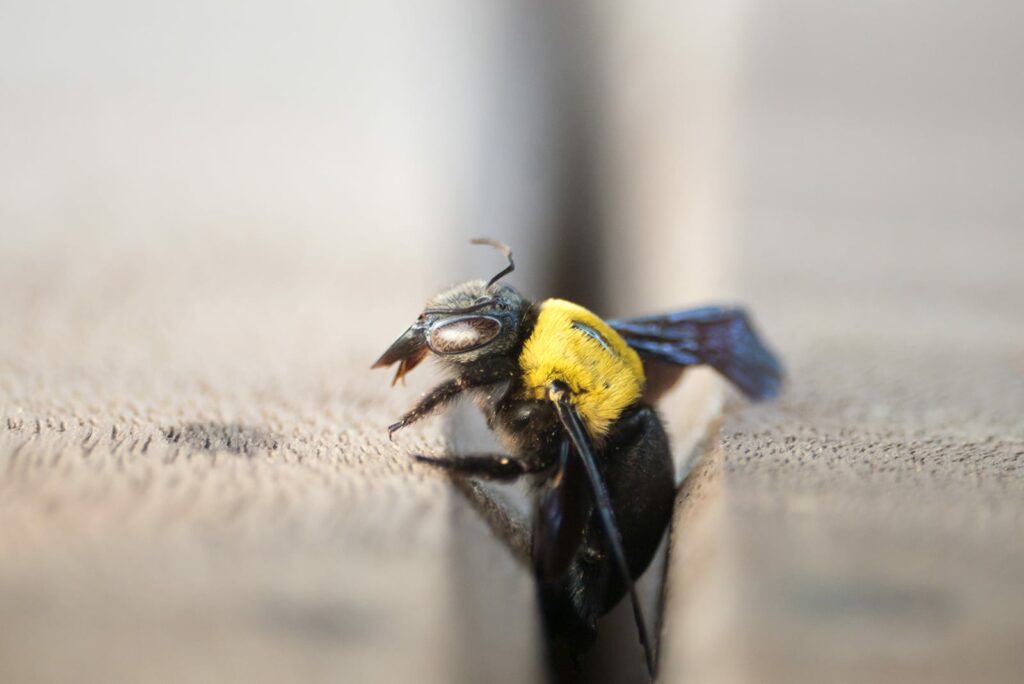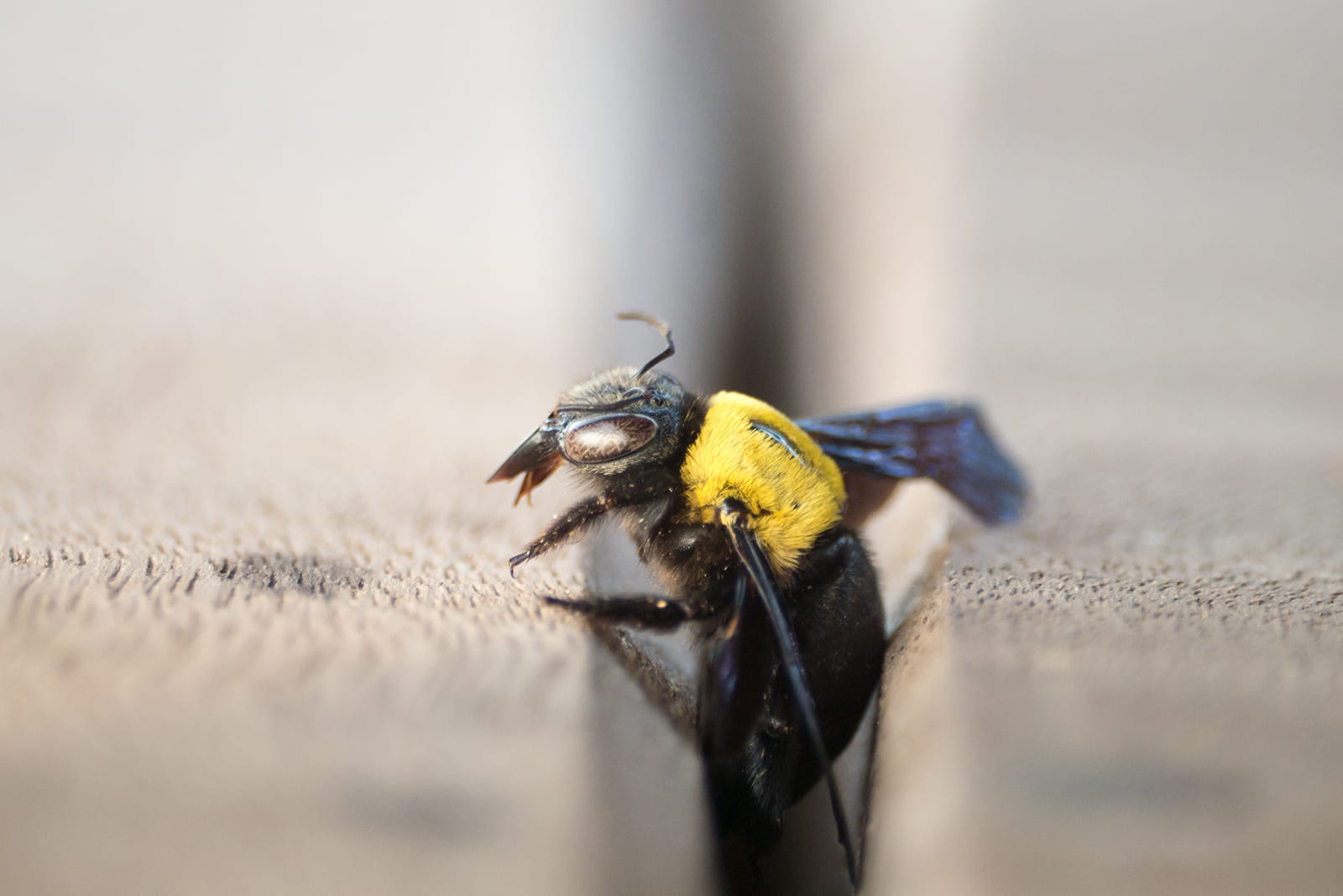
Contents

With pests, many of them live in large colonies and will work for the greater good and their survival. It goes along with the mantra, “Safety in numbers.” Ants will burrow in the ground, bees will form a hive, and mice can build nests. However, some pests prefer the life of solitude, and one of those pests is the carpenter bee.
It may not be one of the age-old questions, but you absolutely need to pick a side when it comes to carpenter bees vs bumblebees. Unlike the bumblebee, the carpenter bee is a solitary insect. They do not live in colonies, but the female carpenter bee will bore circular holes into soft wood and lay their eggs, creating a safe habitat to protect the larvae as they develop. One bee may not seem like an extreme problem, but the carpenter bees can be a threat to your property by causing structural damage.
Differentiating the carpenter bee from a bumblebee can be tricky. They mostly look similar in appearance, but the carpenter bee has a smooth, shiny abdomen instead of a yellow, hairy abdomen of the bumblebee. There are roughly a half dozen different species of carpenter bees in the United States, but the one that is most likely to be found in Michigan is the Eastern carpenter bee, which has that sleek, black body with a patch of yellow hair on the thorax.
The carpenter bee can sting, but it is a rarity. The male carpenter bee is territorial and the one that people may come into contact more often. Usually the male will hover closely to people and is attracted to sudden movements, but it is more likely to cause fear of a sting than actually sting. As for the females, they can sting too, but it is also rare and would require provocation.
What makes the carpenter bee dangerous to your home is its tendency to bore holes into exposed wood on your property. When left untreated, carpenter bees will create even more structural damage with even more holes, and the developing larvae can tunnel into homes. Those holes and tunnels are bad by themselves, but can bring more extensive damage by attracting woodpeckers, which will seek for food within.
Carpenter bees can survive through the winter by storing pollen in an abandoned nest tunnel and waiting for the spring. When they emerge, the carpenter bee will feed on nectar, mate and build galleries.
Females will build galleries in soft, unpainted and worn wood. These can be found around your home, but also nearby in structures like the garage, decks and fences. As the female chews into the wood, it will create tunnels and a more open area called a cell. These cells will store provisions of pollen and regurgitated nectar for the larvae to feed on, and can close up this area with chewed wood pulp.
Getting rid of carpenter bees can be as simple as using an appropriate insecticide on each gallery. After application, you need to wait for the female to enter and come into contact with the product. In order to prevent carpenter bees from returning and reusing the galleries, you need to seal them up. Painting or staining wood might also be enough to deter them from burrowing.
Often, what worries homeowners is the appearance of pests. The carpenter bee can create worry by creating multiple galleries and causing structural damage around your house. If you suspect carpenter bees are getting too comfortable in your home, call Van Den Berge Pest Control at 616-392-7367.
Trust the locally owned, widely renowned experts at Van Den Berge Pest Control for all of your pest needs. With over 100 years of combined experience throughout the Holland, MI-based pest control team, you know you’re in excellent hands with our state-certified experts.
Recent Posts
What Are Professional Flea Extermination Services?
If you’re dealing with a flea infestation, understanding professional flea extermination services is vital. These
Can You Really Keep Mice Out of Apartments?
Keeping mice out of apartments is more than just wishful thinking. By understanding their behavior
Stop Mice Infestations in Apartments Now
You might think Mice Infestations are a small nuisance, but they can escalate into a
